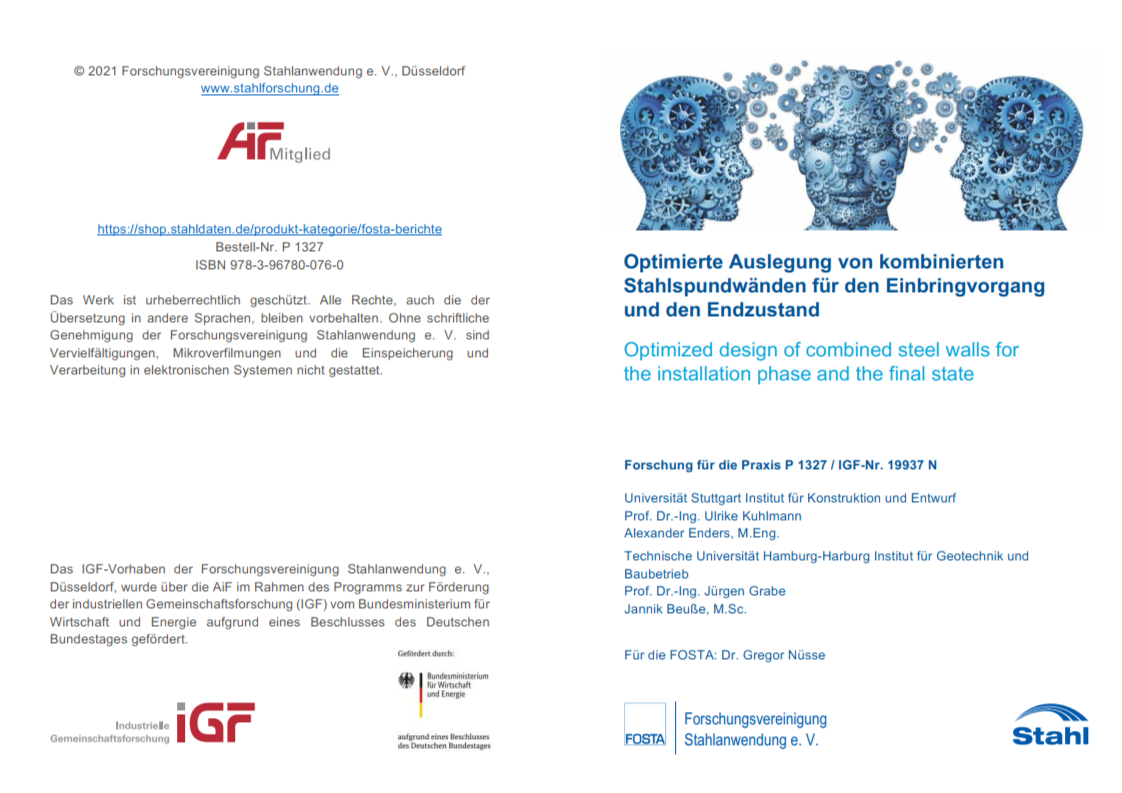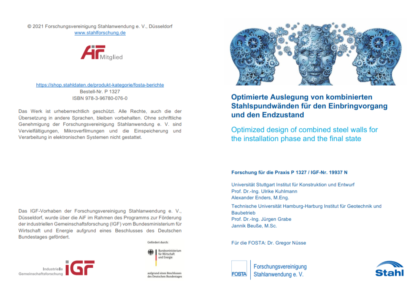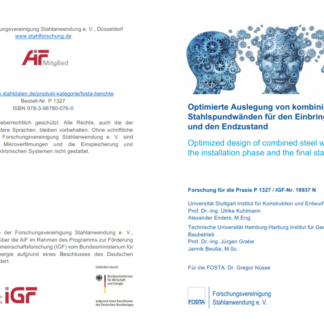Description
P 1327 – Optimized design of combined steel walls for the installation phase and the final state
The overall objective of the research project is the optimization of design procedures of combined steel sheet piles used in quay wall construction for the protection of terrain jumps. For this purpose, the following objectives are defined:
- The design is carried out without taking the installation process into account. The influence on the final position and thus also on the design are to be checked. (Objective 1)
- Furthermore, the surrounding soil is not considered as resistance in the combined verification against buckling and lateral torsional buckling, and the loadbearing behaviour in the final state is underestimated. There is a lack of incentives to consider soft soils and stratified subsoil structures. (Objective 2)
- For the flanges of the king piles, global internal forces and local influences from flange bending are currently only roughly considered by a reduction of the yield strength. Load reserves with separate consideration are to be examined. (Objective 3)
- Either only plastic or only elastic moment resistances are assigned to the intermediate piles for the determination of the load-bearing capacity. The application of partially plastic resistances shall be investigated. (Objective 4)
First, the basic principles were determined in a parameter identification in the research project. For this purpose, common quay wall projects were analysed regarding the surrounding soil situation of king piles. The valid design methods were also compiled. This is followed by an investigation of the installation during heavy pile driving to identify the dynamic influences of the installation method on the final position. The results show the influence of the pile driving during installation and serve as a basis for numerical investigations. With the numerical substitute model for the installation of king piles, individual influencing variables in the final position were identified and recommendations for the installation in the correct state were given.
Small-scale tests as well as full-scale tests were carried out to consider the bedding of the king piles in cohesive and layered soils and spring stiffnesses were derived. With a numerical model, generally applicable approaches were determined. Together, these serve as a basis for further investigations on flexural buckling and lateral torsional buckling of I-shaped king piles in layered soils. The lateral torsional buckling investigations considered common quay wall structures and soils in North German deep-sea ports. Extensive parameter investigations were carried out and the buckling length coefficients were evaluated. Approximation functions were derived and statistically evaluated. With these results, the verification against lateral torsional buckling is now possible with indirect consideration of the resistances in the soil. Investigations show an optimisation of the verification for a typical quay wall of up to 40 %. Furthermore, criteria for the neglection of the verification were developed.
In addition, parameter studies were carried out on partially welded king piles. Based on the results, formulas for determining the effective torsional moment of inertia were derived. Up to now, it has not been possible to take partial welding fully into account in the design. The formulas determined were proposed in TC250/SC3/WG18 and incorporated into the draft of prEN1993 Part 5. Recommendations for the determination of the resistance were given for the design of king piles under local loading with an additional global loading. In addition to the water pressure, the resistance model considers other important geometrical parameters as well as the material of the king piles and intermediate piles.
To consider partially plastic states in the design of Z-piles loaded with bending, 4-point bending tests were performed and an FE model was validated. Parameter studies were carried out on various profiles from practice and a resistance model was derived and partial safety factors were determined. The results for the partial plastic design are introduced into the standard Eurocode 3 Part 5. The experimental and numerical investigations have already been presented in TC250/SC3/WG18-meetings. Up to 15 % higher load capacities can be considered.
Published in:
2021
Authors:
Prof. Dr.-Ing. U. Kuhlmann, A. Enders, M.Eng, Prof. Dr.-Ing. J. Grabe, J. Beuße, M.Sc.




